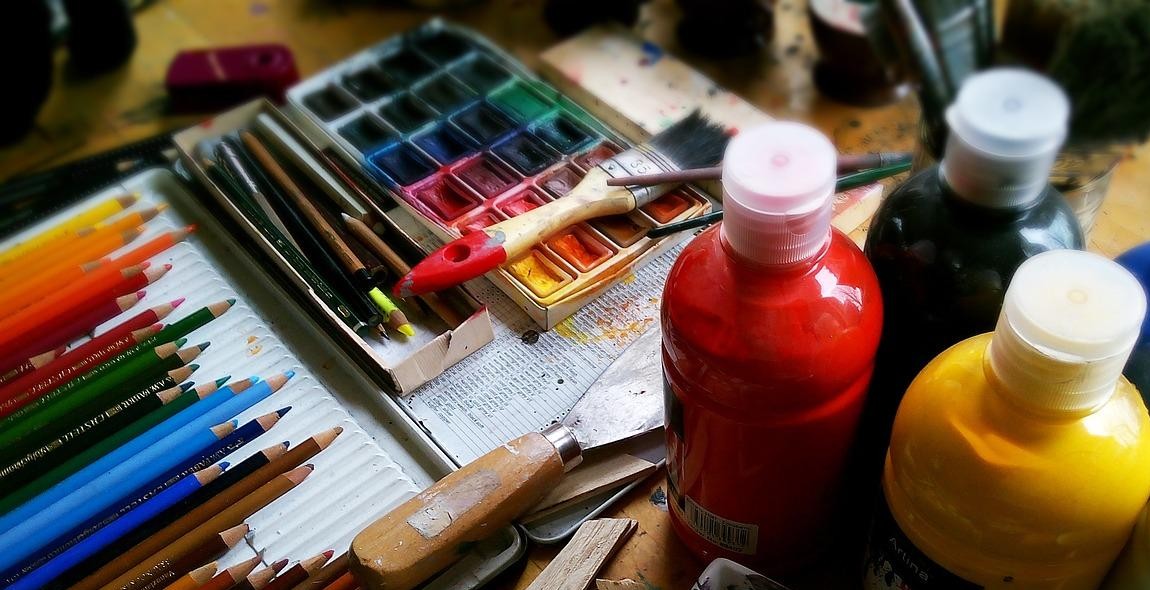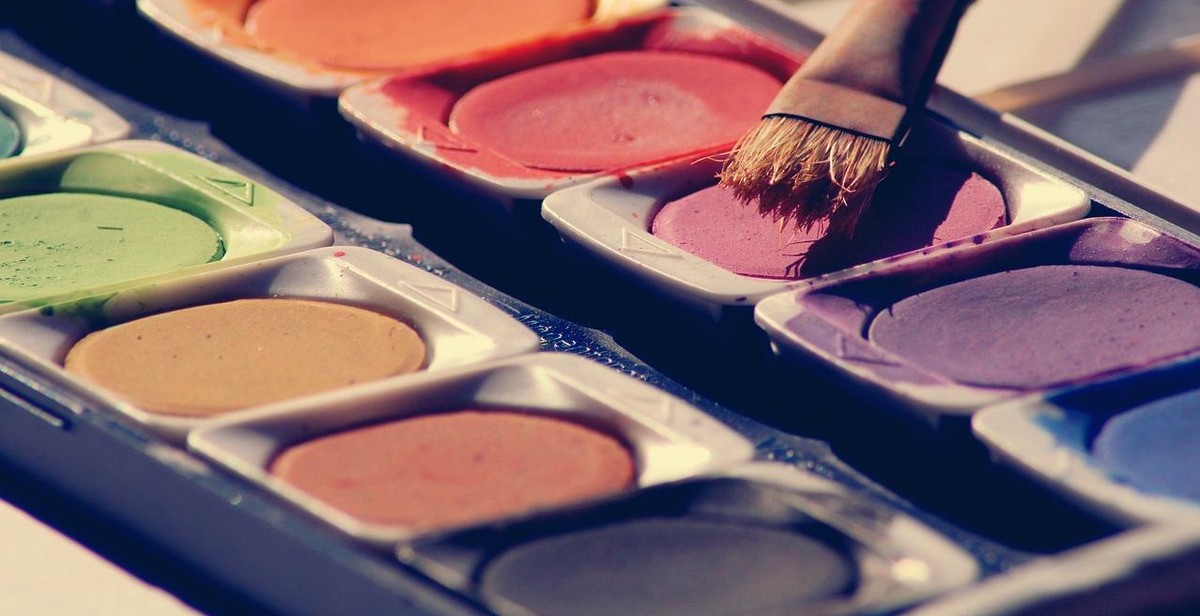How to Paint with Acrylics: Techniques and Tips for Acrylic Painting
Acrylic painting is a popular and versatile medium that can be used to create a wide range of effects, from bold, vibrant colors to subtle, delicate blends. As a professional artist with years of experience working with acrylics, I know firsthand how rewarding and exciting this medium can be.
In this article, I will share with you my top tips and techniques for painting with acrylics. Whether you’re a beginner or an experienced artist looking to expand your skills, this guide will provide you with all the information you need to create beautiful, eye-catching paintings with acrylics.
The Advantages of Acrylic Painting
Acrylics offer a number of advantages over other painting mediums. They dry quickly, which means you can work faster and make changes more easily. They are also very versatile, allowing you to create a wide range of effects, from thin, transparent glazes to thick, impasto textures. And because they are water-soluble, they are easy to clean up and don’t require any toxic solvents.
The Basics of Acrylic Painting
Before diving into specific techniques and tips, it’s important to understand the basic properties of acrylics. Acrylics are made from pigment suspended in a polymer emulsion, which gives them their unique properties. They can be thinned with water or medium to create a range of viscosities, from thin washes to thick impastos. They can also be mixed with other mediums, such as gels and pastes, to create different textures and effects.
- In the next section, we’ll cover some basic techniques for working with acrylics, including how to prepare your canvas, mix colors, and apply paint to create different effects.
- Then, we’ll move on to more advanced techniques, such as layering, glazing, and working with different tools and materials.
- Finally, we’ll wrap up with some tips for troubleshooting common problems that can arise when working with acrylics, such as cracking and color shifting.

Materials Needed for Acrylic Painting
Acrylic painting is a fun and exciting way to express your creativity. To get started, you’ll need to gather the following materials:
1. Acrylic Paints
The first thing you’ll need is a set of acrylic paints. Choose a variety of colors that you like and that will work well together. Look for high-quality paints that have good pigmentation and are easy to work with. Some popular brands include Winsor & Newton, Liquitex, and Golden.
2. Paint Brushes
You’ll also need a set of paint brushes. Look for brushes that are specifically designed for acrylic painting. You’ll want a variety of sizes and shapes, including flat, round, and angled brushes. Some good brands to consider include Princeton, Royal & Langnickel, and Daler Rowney.
3. Canvas or Painting Surface
You’ll need a surface to paint on, such as a canvas or a board. You can find pre-stretched canvases at your local art supply store, or you can make your own by stretching canvas over a wooden frame. You can also paint on other surfaces, such as paper, cardboard, or wood.
4. Palette
A palette is essential for mixing and blending your paints. You can use a traditional palette made of plastic or wood, or you can use a disposable palette made of paper. Some artists also like to use a glass palette, which can be easily cleaned and reused.
5. Water and Paper Towels
You’ll need water to thin your paints and clean your brushes. Keep a jar of water nearby while you paint. You’ll also need paper towels to wipe your brushes and clean up any spills or drips.
Conclusion
With these materials, you’ll be well on your way to creating beautiful acrylic paintings. Remember to have fun and experiment with different techniques and styles!
Preparing the Painting Surface
Before starting an acrylic painting, it is important to properly prepare the painting surface. This includes priming the canvas, choosing the right surface, and sketching the design.
Primng the Canvas
Primng the canvas is an essential step in preparing the painting surface. It creates a barrier between the paint and the canvas, preventing the paint from soaking into the fibers and causing discoloration or damage to the canvas over time. There are a variety of primers available, including acrylic gesso, which is a popular choice for acrylic painting. It is important to apply at least two coats of primer, allowing each coat to dry completely before applying the next.
Choosing the Right Surface
Choosing the right surface is also important when preparing the painting surface. Acrylic paint can be applied to a variety of surfaces, including canvas, wood, paper, and even glass. It is important to choose a surface that is appropriate for the intended use of the painting. For example, canvas is a good choice for paintings that will be hung on a wall, while wood may be a better choice for paintings that will be displayed on a tabletop.
Sketching the Design
Sketching the design on the canvas before painting is a helpful step in the preparation process. It allows the artist to plan out the composition and make any necessary adjustments before applying paint. A simple pencil sketch can be used to outline the basic shapes and forms, while more detailed sketches may be necessary for complex compositions.
By properly preparing the painting surface, artists can ensure that their acrylic paintings will be long-lasting and visually appealing.

Basic Techniques for Acrylic Painting
Acrylic painting is a versatile and popular medium for artists of all levels. Here are some basic techniques to help you get started:
Wet-on-Wet Technique
The wet-on-wet technique involves applying wet paint onto a wet surface. This technique is great for creating blended, soft edges and can be used for creating backgrounds, skies, and water. To use this technique, apply a thin layer of paint to your canvas, then immediately add another layer of wet paint on top. Blend the colors together with a brush or a palette knife.
Dry Brush Technique
The dry brush technique involves using a dry brush with very little paint on it to create texture and depth. This technique is great for creating the appearance of fur, hair, or rough surfaces. To use this technique, dip your brush into the paint, then wipe most of it off on a paper towel or piece of cloth. Use short, quick strokes to apply the paint to your canvas.
Glazing Technique
The glazing technique involves applying thin layers of translucent paint on top of each other to create depth and luminosity. This technique is great for creating the appearance of stained glass, watercolor, or a glowing effect. To use this technique, apply a thin layer of paint to your canvas, then let it dry completely before adding another layer on top.
By mastering these basic techniques, you will be able to create a wide range of effects and styles in your acrylic paintings.

Color Mixing
Acrylic paints are known for their versatility and ability to blend seamlessly. Whether you are a beginner or an experienced painter, understanding color mixing is essential to achieve the perfect hues and shades in your artwork.
Primary Colors
The primary colors in acrylic painting are red, blue, and yellow. These colors cannot be created by mixing other colors together.
Secondary Colors
Secondary colors are created by mixing two primary colors together. The secondary colors in acrylic painting are green (yellow + blue), orange (red + yellow), and purple (red + blue).
Tertiary Colors
Tertiary colors are created by mixing a primary color with a secondary color. For example, mixing blue with green will create a blue-green color. Tertiary colors add depth and complexity to your artwork.
Color Harmony
Color harmony is the concept of selecting colors that work well together in a painting. This can be achieved through complementary colors (colors opposite each other on the color wheel), analogous colors (colors next to each other on the color wheel), or a monochromatic color scheme (using different shades of one color). Understanding color harmony is crucial to creating a visually pleasing painting.
| Primary Colors | Secondary Colors | Tertiary Colors |
|---|---|---|
| Red | Green (yellow + blue) | Red-orange (red + orange) |
| Blue | Orange (red + yellow) | Blue-green (blue + green) |
| Yellow | Purple (red + blue) | Yellow-green (yellow + green) |
Experimenting with color mixing can be a fun and exciting part of the painting process. Don’t be afraid to try new combinations and techniques to create unique and beautiful artwork.
Tips for Acrylic Painting
1. Work in Layers
Acrylic paints dry quickly, which can be an advantage when you want to build up layers of colors. Start with a light layer and gradually add more layers to achieve the desired depth and texture. This technique allows you to correct mistakes and make adjustments as you go, without having to wait for the paint to dry completely.
2. Keep Brushes Clean
Acrylic paint can be difficult to remove once it dries on your brushes. To prevent this, rinse your brushes frequently while painting and clean them thoroughly with soap and water after each use. This will help extend the life of your brushes and ensure that your colors stay true.
3. Experiment with Different Surfaces
Acrylic paint can be used on a variety of surfaces, including canvas, paper, wood, and even plastic. Experiment with different surfaces to see how the paint behaves and what effects you can achieve. Some surfaces may require a primer or preparation before painting, so be sure to read the instructions carefully.
4. Don’t Overwork the Paint
While acrylic paint dries quickly, it can also become tacky if overworked. Avoid going over the same area repeatedly, as this can cause the paint to lift or become uneven. If you need to make corrections, wait for the paint to dry completely before making any changes.
| Quick Recap: |
|---|
| 1. Work in layers |
| 2. Keep brushes clean |
| 3. Experiment with different surfaces |
| 4. Don’t overwork the paint |
Conclusion
Acrylic painting is a versatile and forgiving medium that can be used to create stunning works of art. With the right techniques and tips, anyone can learn to paint with acrylics and achieve great results.
Start by selecting the right materials, including high-quality paints, brushes, and canvases. Then, experiment with different techniques, such as layering, blending, and dry brushing, to create different effects and textures.
Don’t be afraid to make mistakes, as acrylics can easily be corrected or painted over. And remember to have fun and enjoy the process of creating art.
Whether you’re a beginner or an experienced artist, there’s always something new to learn and explore with acrylic painting. By following these tips and techniques, you can take your skills to the next level and create beautiful, unique works of art.
- Choose high-quality materials
- Experiment with different techniques
- Don’t be afraid to make mistakes
- Enjoy the process of creating art
So, grab your paints and brushes and start exploring the world of acrylic painting today!
